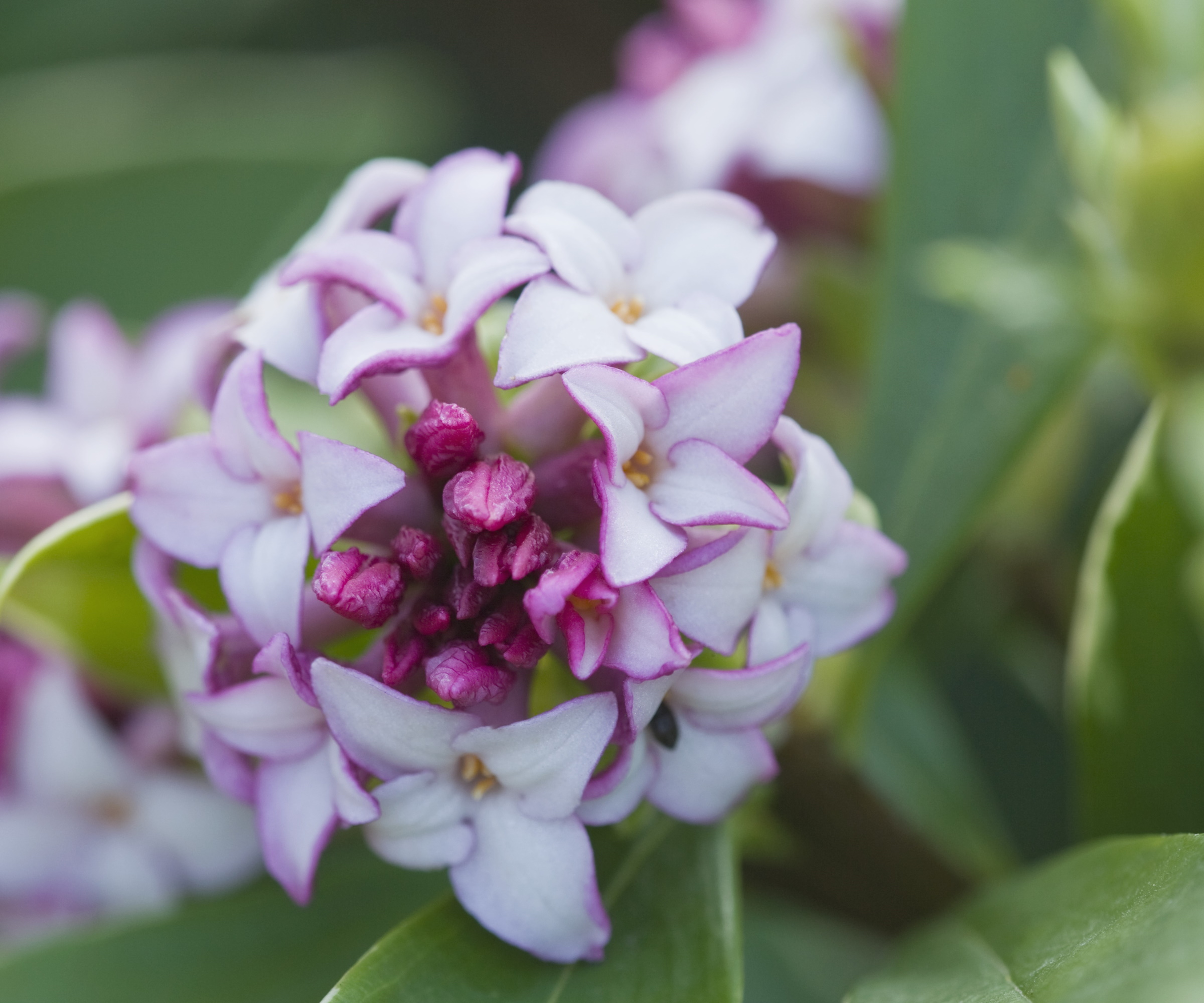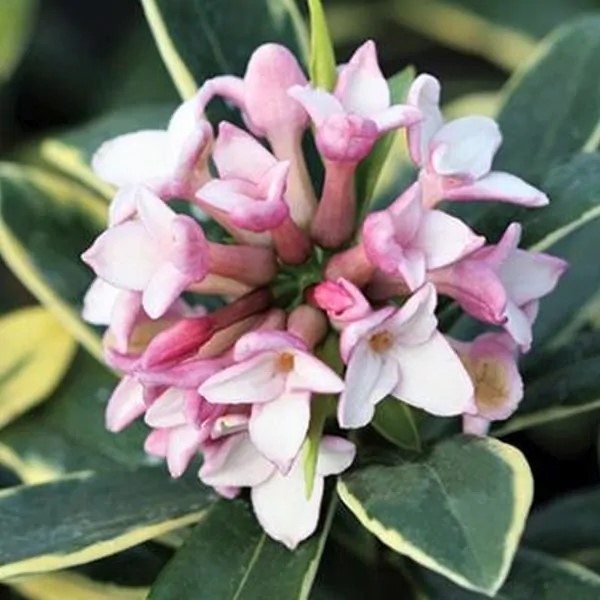How to grow daphne – and enhance your winter garden with this fragrant evergreen
Sweetly scented and colorful, this shrub will create impact and interest in your backyard


Daphne odora, commonly known as winter daphne, is a popular winter flowering shrub, grown for its highly fragrant and attractive flowers. It can certainly add something unique to your garden, with purple-pink buds emerging in fall, going on to open in early winter and revealing delicate pale petals.
As with other winter flowering shrubs, such as witch hazel, winter jasmine or wintersweet, having blooms in your backyard at this time of year can help to brighten up your backyard, with floral pops of color and a sweet fragrance much needed after the excitement of fall is over and the holidays have gone by.
Native to China and Japan, Daphne odora has been cultivated for millennia, with references to the shrub found in ancient Chinese poetry and classical Japanese literature. Ever since, the aromatic flowers of winter daphne have captivated gardeners, and it is easy to see why. Today, it is a popular addition to garden borders worldwide, with the pink blooms signaling the ending of one year and the start of another.
The flowers and the fragrance of Daphne odora also serve as a lure for early pollinators, when little else is in flower in the garden. If, however, shivering in your backyard to seek out this sweetly-scented shrub is not your idea of a good time, the stems of daphne also make for great cut flowers and can fill your home with an appealing perfume through the winter months.
Winter daphne is a sensory and visually pleasing addition to any winter garden. Read on to find out how best to grow this evergreen shrub.

How to grow Daphne
Not everything is dormant in the garden during the colder and darker months of the year. Consider growing a winter daphne to maintain interest through to spring.
Things to consider before growing daphne

Daphne is a great winter option for your garden, and the fragrant blooms will certainly create an impact. 'Incorporating plants with fragrant blooms, like daphne, enhances the sensory experience of a garden,' says Mike Murphy, garden expert and owner at You Had Me At Gardening. 'Fragrant plants not only add beauty but also attract pollinators, creating a harmonious and vibrant garden environment,' Mike continues.
Design expertise in your inbox – from inspiring decorating ideas and beautiful celebrity homes to practical gardening advice and shopping round-ups.
This shrub will grow in US hardiness zones 4 - 9. Whilst evergreen, in colder areas you may experience leaf drop. For best results, if you live in a cooler zone with colder winters, select a sheltered, bright spot in the garden, perhaps against a perimeter wall, or consider growing in a container that you can protect during winter.
Daphne is a 'slow growing shrub' Mike says, 'typically only growing a few inches in height per year,' and taking up to 10 years to reach a mature size, usually around 3 - 4 ft. tall. For this reason, selecting good-sized specimens from plant nurseries and garden centers is ideal, such as this Daphne odora 'Rogbret' from Nature Hills. Planting for instant impact is always recommended when considering daphnes.

Mike grew up gardening with his parents and grandparents. He enjoys his backyard orchard of dwarf fruit trees, raspberry and blackberry patches, and raised garden boxes. In addition to his perennials, Mike enjoys sprouting new fruit and vegetable seeds every spring.
Top tips for planting and maintaining daphne

- Soil: Daphne shrubs can be tricky when planting. They do not like having their roots disturbed, so taking your time and planting with care is crucial. 'The optimal time to plant daphne,' Mike recommends, 'is during the fall or early spring.' By planting at a mild time of year, we 'allow the plant to establish its roots before facing extreme temperatures.' Daphnes prefer moist but well-draining soil, so applying a layer of mulch or barkchip in the fall can help.
- Light: For the best results, plant your daphne in a part sun-part shade position. Whilst full sun might suit some daphne varieties, most prefer some shade at times throughout the day.
- Watering: Regular watering is necessary during the first year after planting. Be sure to check on your daphne by touching the soil around the base of the plant and if the soil is dry to the touch, give your daphne a deep drink of water. Ensure that the water can drain through the soil and that the shrub is not sitting in water.
- Fertilizing: Feed your daphne once or twice during the growing season with a balanced fertilizer. As a shrub that has a preference for acidic conditions, applying an acid feed, such as this Soil Acidifier from Garden Goods Direct will help produce better blooms.
- Pruning: 'Pruning is generally minimal,' Mike says, 'and should be done immediately after flowering to shape the plant.' Inspect your daphne and 'remove dead or damaged wood to maintain its natural form.' Generally, as a slow-growing shrub, maintenance and pruning will be minimal.
FAQs
Can daphne be grown in containers?
Yes, Daphne odora can be grown in containers. This can be an effective option in cooler zones, where plants can be moved and protected during the winter months. In general, plants require large containers with plenty of drainage holes and drainage material placed at the bottom of the container. Remember that daphne plants do not like sitting in water, and drainage is crucial.
Growing daphne in your backyard will add stunning color and a fragrant scent at a time of year when it is most needed. There are other winter flowering shrubs to consider, such as wintersweet or winter jasmine, both of which can add impact to your garden.

Thomas is a Content Editor within the Gardens Team at Homes and Gardens. He has worked as a professional gardener for both public spaces and private estates, specializing in productive gardening, growing food and flowers. Trained in Horticulture at the Garden Museum, he has written on gardening and garden history for various publications, including The English Garden, Gardens Illustrated, Hortus, The London Gardener and Bloom. He has co-authored a Lonely Planet travel book, The Tree Atlas, due out in 2024.
